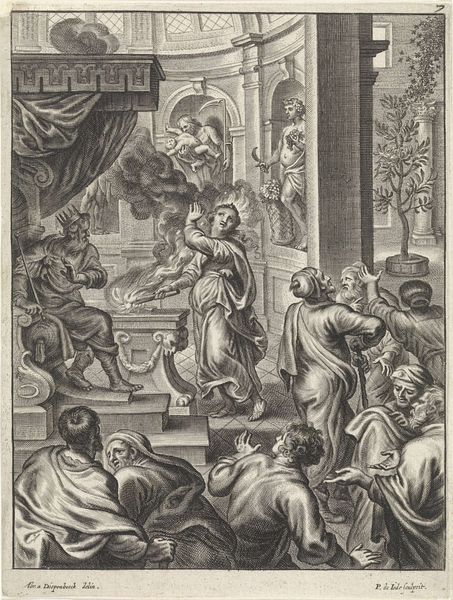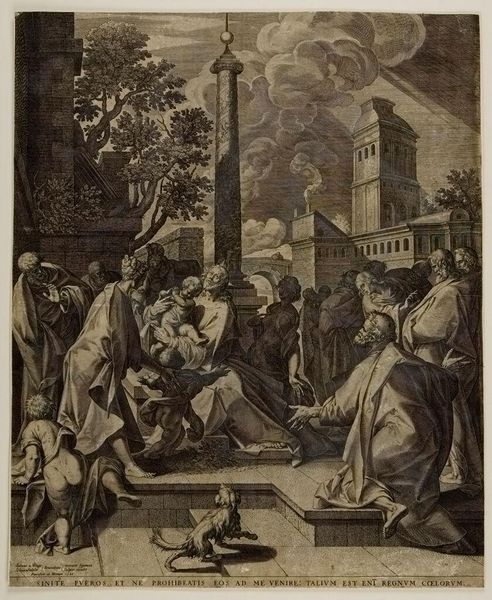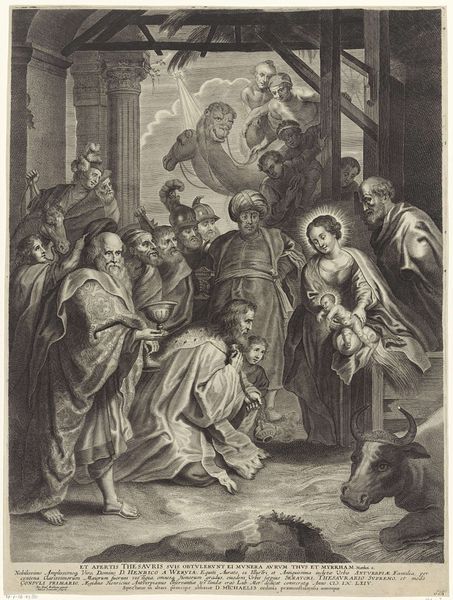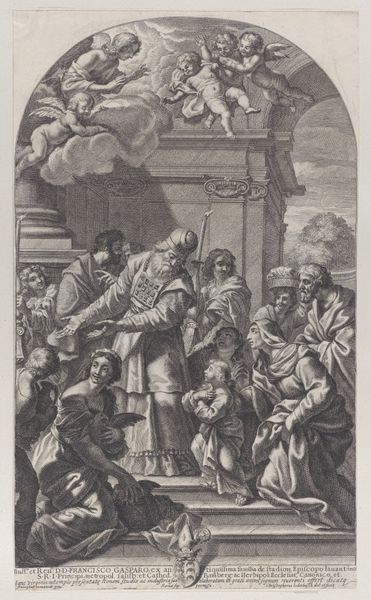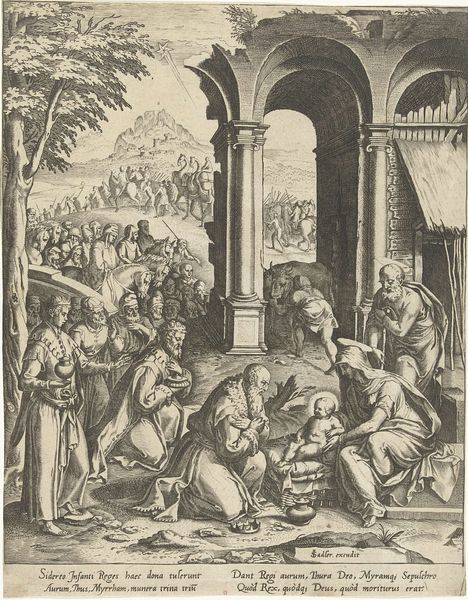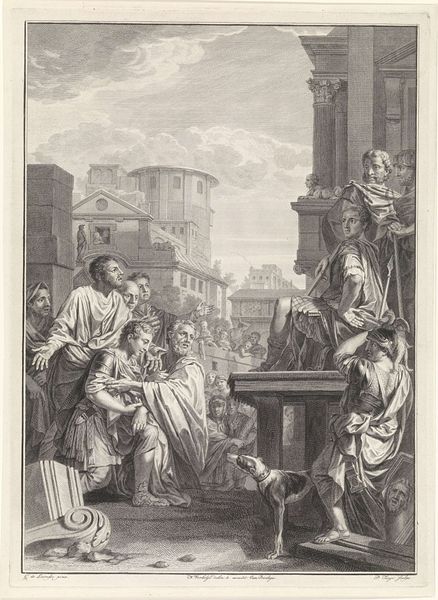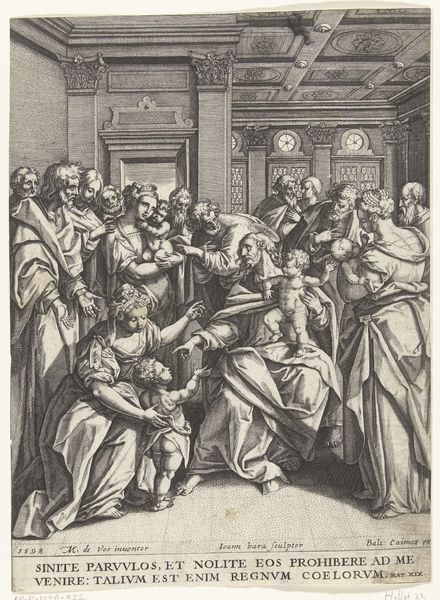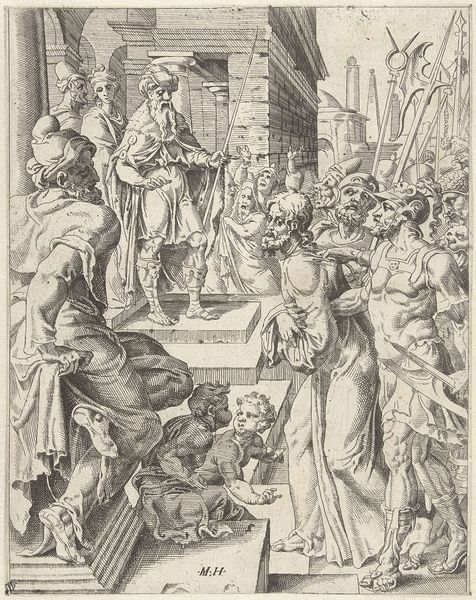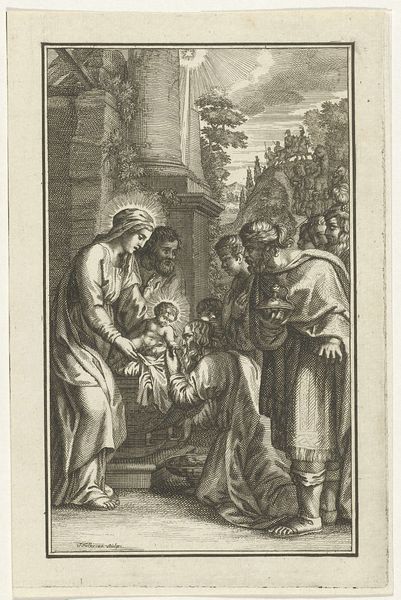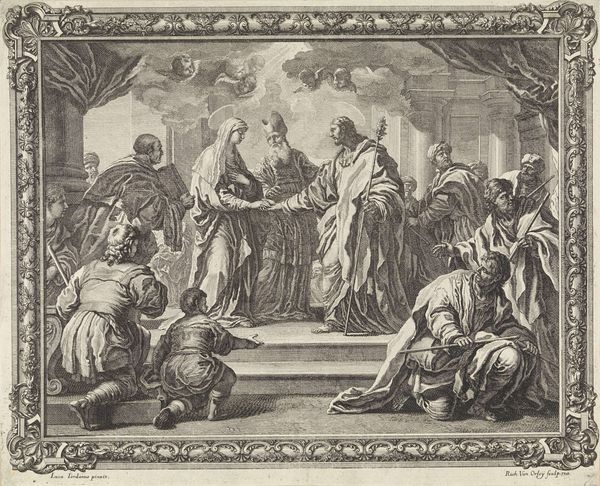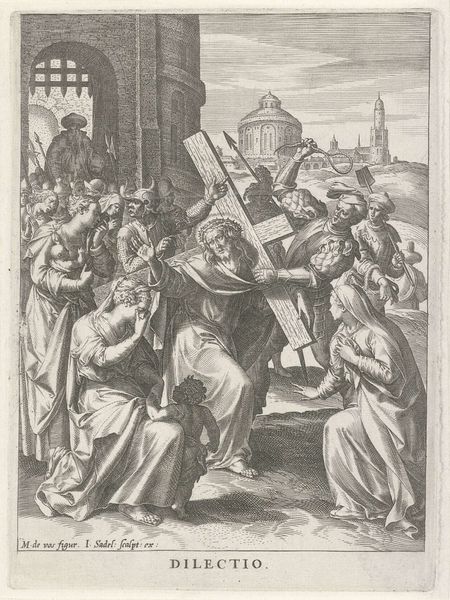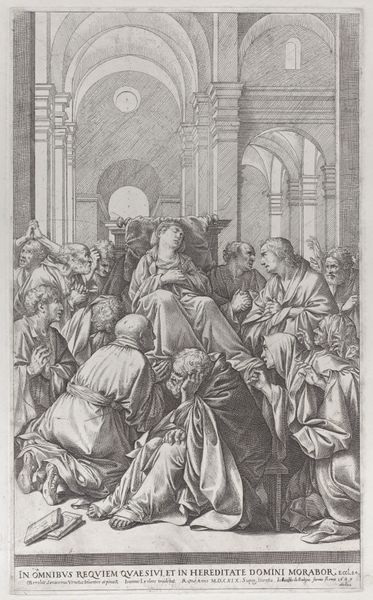
print, engraving
#
narrative-art
# print
#
landscape
#
figuration
#
11_renaissance
#
history-painting
#
northern-renaissance
#
engraving
Dimensions: height 527 mm, width 419 mm
Copyright: Rijks Museum: Open Domain
Christus zegent de kinderen, or Christ Blessing the Children, was created by Johann Sadeler the first around the turn of the 17th century, using engraving. The incised lines of engraving create a graphic language, where the precision and delicacy of the lines determine the image's emotional impact. The skilled labor required is intense, involving hours bent over a metal plate, painstakingly carving out the composition. Each mark is a testament to the engraver's control and artistry. The dense network of lines creates depth and shadow, giving the scene a tangible presence. Sadeler’s choice of engraving speaks volumes about the dissemination of religious imagery during the late Renaissance. The printmaking process allowed for the mass production of images, making them accessible to a wider audience and functioning as a means of cultural and religious transmission. By understanding the materials, making, and social context surrounding this engraving, we gain a deeper appreciation for its significance, challenging the traditional separation between fine art and craft.
Comments
No comments
Be the first to comment and join the conversation on the ultimate creative platform.

